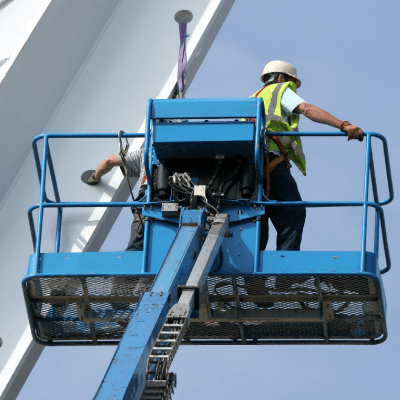The HSE has issued a bulletin alert regarding safe working with platform lifts.
Potential dangers include:
- Inadequate maintenance of door components.
- Inappropriate adjustment of door locks.
- Interference with zone bypass switches at doors.
- Unauthorised access to lift well (shaft) when the lifting platform (lift car) is at a different level
Recommended Actions:
- Carry out appropriate levels of maintenance
- Regular safety checks
Platform lifts (vertical lifting platforms), like traditional passenger lifts, provide access between floors. Platform lifts are hydraulically, or electrically powered. Usually, they operate over two to three floors. They typically rely on hold to run operation and operate at slower speeds than conventional passenger lifts.
HSE is aware of a number of incidents involving tampering with safety devices or inappropriate maintenance of door switches or unlocking zone bypass switches during maintenance. Combined with deterioration of the doors and their hinges, landing doors have opened when the platform/lift car is not at that landing. This resulted in people potentially accessing the lift well when the lifting platform was not at the same floor level/landing. This has resulted in members of the public or workers falling down the open lift well or becoming trapped beneath a descending platform.
Three incidents occurred on early model Nami-lift 400 platform lifts in the serial number range from 2433 (installed in September 1999) to 4225 (installed in December 2006). These lifts incorporate Bowden cables to control the door locks, which are more susceptible to incorrect adjustment.
HSE has identified a number of issues as a result of wear or inappropriate maintenance:
- Bent door lock switch contacts – The contacts on door lock switches have been bent to increase the switch contact force; however, this can prematurely signal to the control system that the door is locked, allowing operation of the lift platform when the locking pin is only partially engaged with the latch plate.
- Shortened door lock pins which do not provide adequate engagement with the door lock plate, allowing the door to be opened.
- Incorrect adjustment of Bowden cables.
- Missing screws securing door locks and latch plates.
- Poor adjustment of unlocking zone bypass mechanisms, meaning that the switch remains permanently activated, allowing the platform to travel between floors with the landing doors open.
- Damage to doors and door frames resulting in poor door alignment.
Actions required:
Lift maintenance companies should ensure maintenance activities are undertaken by competent personnel; in line with the manufacturer’s instructions and/or guidance; and in accordance with a safe system of work. Maintenance of the safety elements of the lift must not affect its safe operation. Modifications intended to keep a lift operating but which may result in unsafe operation must not be carried out under any circumstances.
Owners and operators of vertical lifting platforms should:
Review maintenance and inspection procedures to ensure that these tasks are carried out by persons competent to do so introduce simple tests into daily checks for the lifts to confirm that:
Landing doors cannot be opened when the platform is not at the same level and;
The platform cannot travel without the doors closed and locked
The checks should be carried out by a person who is competent to do so.
With thanks to http://www.hse.gov.uk for the information given.

